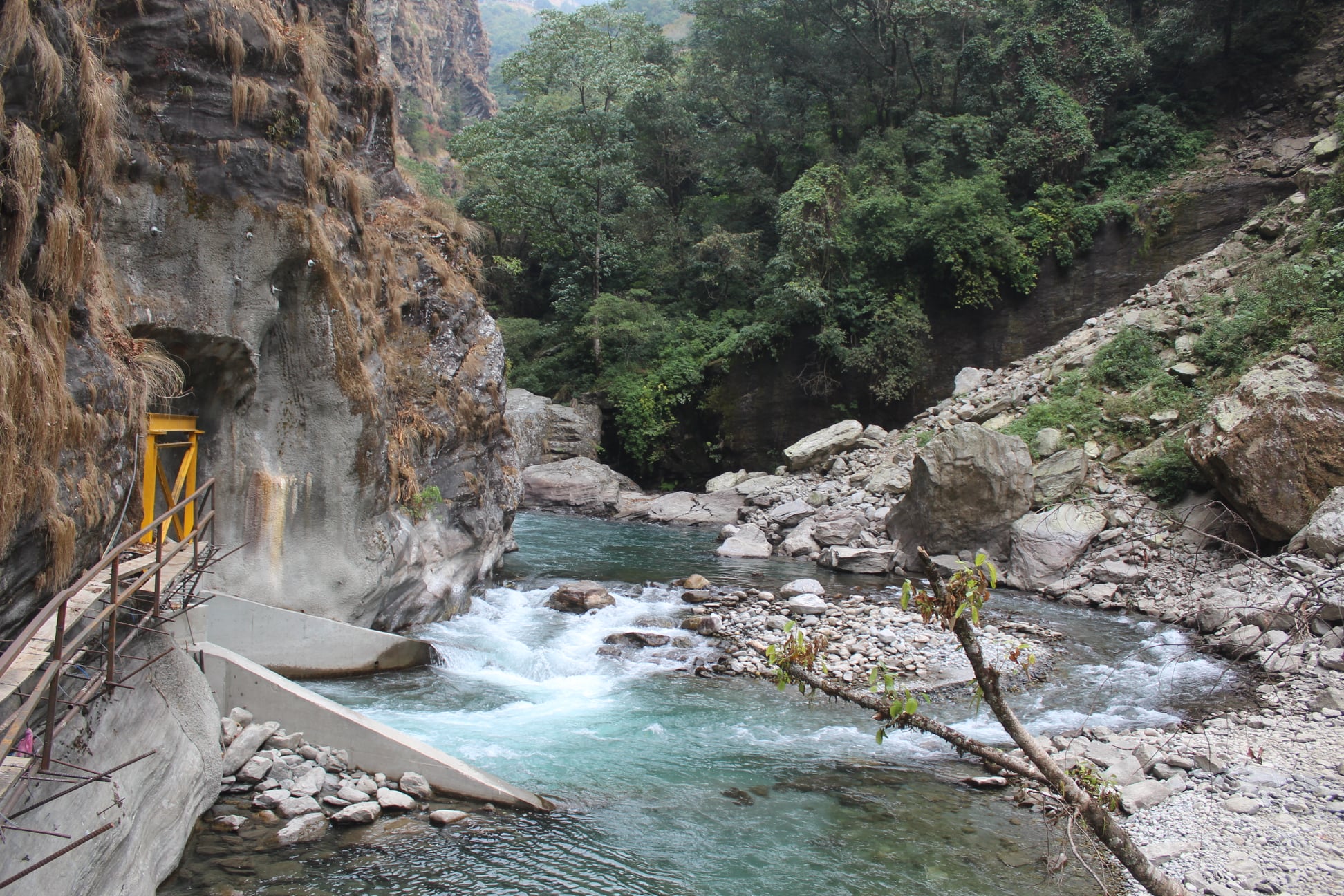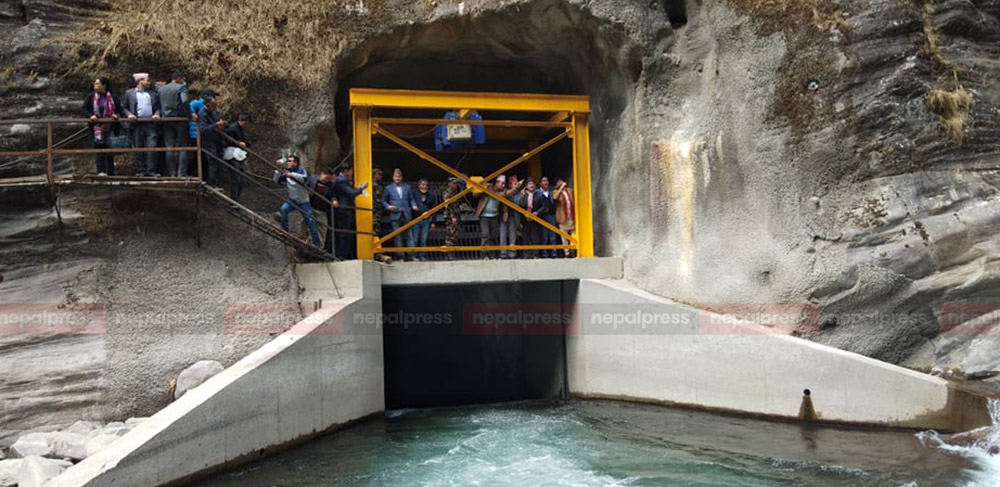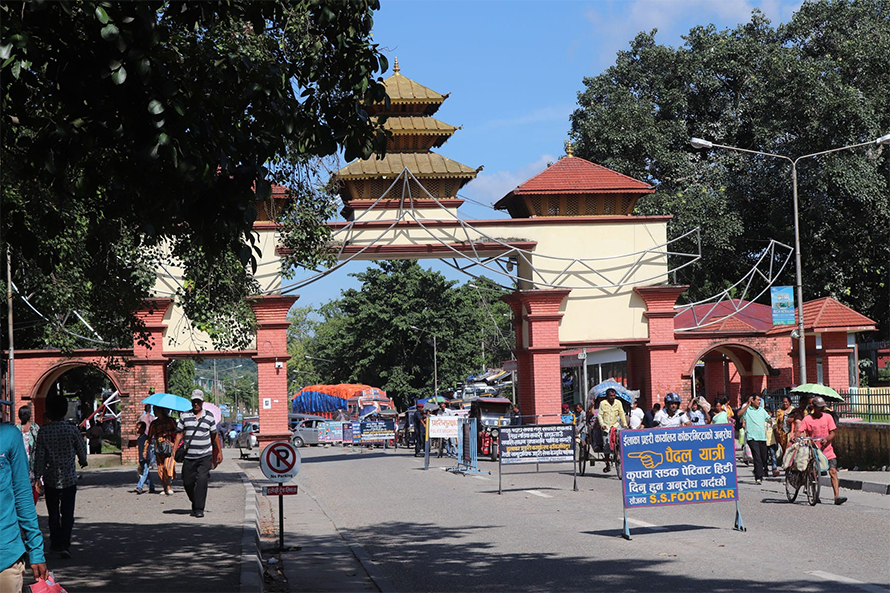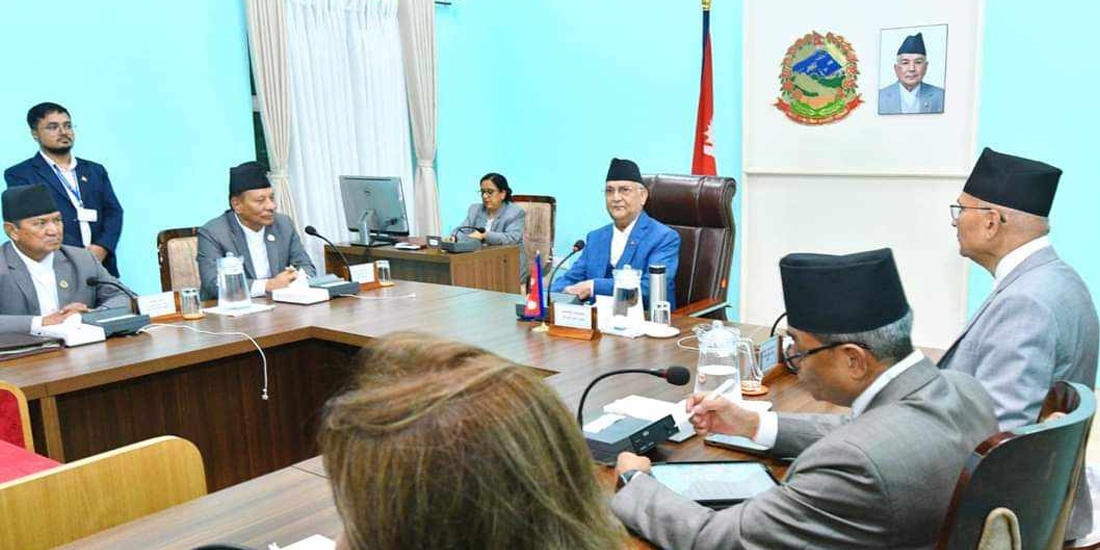Water from Melamchi being distributed to Kathmandu residents from Sunday

KATHMANDU: The much-awaited Melamchi water is falling into the homes of Kathmanduites from Sunday. With this, the people of Kathmandu will experience great relief as they have been facing a shortage of water for years.
The water of Melamchi was welcomed in Sundarijal for the first time in the presence of Prime Minister KP Sharma Oli on Saturday. The project has stated that the water will be sent to the Kathmandu residents on 28th March. However, not all of the water at household taps will be suitable for drinking right now.
The Melamchi Drinking Water Development Committee is going to send water through new and old distribution lines. The committee has stated that the new pipeline is being sent to the distribution line for testing and not for drinking water.
Spokesperson of the Committee Rajendra Panta told Nepal Press that even if water is sent to the new distribution line, it will not be drinkable.
“The water that we process and send to the old distribution line will be drinkable. But the water sent to the new distribution line is not drinkable,” he said.
He says it will take time to test the new distribution system, disinfect and drain the water. Earlier, the plan was to divert the water from the tunnel to Bagmati for the second time. But instead of this, the water treatment plant will also be tested along with the expanded pipelines and sent directly to households through the distribution lines.
The trial period of the tunnel and water treatment plant has not been completed yet. During this period, water has been held within the tunnel. The method of testing is to fill the tunnel little by little, hold, and then throw out the water.
The water from Sundarijal was added to Bagmati River last month. Even now, preparations were done to pour the water into Bagmati. However, the committee plans to start water treatment plant work too.
The committee is thinking of cleaning some pipes through the same water wholesale distribution system. After that, the water inside the tunnel will be washed and re-observed, said Spokesperson Panta.
He informed that experts will check to see if the tunnel is in good condition.
Panta says, “Now, the water in the tunnel is about to be taken out. If it is kept in the pipeline rather than in Bagmati, it means that the pipeline can also be tested.”
He added, “The water that will be sent from the new pipe on the 28th is dirty and not drinkable.”
After rinsing the pipe, the pressure on the pipe should be tested first and find out where the leaks are. After this test is complete, the pipe washing will begin. If leaks are seen after the test is successful, they must be repaired.
Then, disinfection should be done once the leak is fixed and cleaned. Disinfection is cleaned with processed water. Only then can drinking water be provided to households, according to Panta.
It is also doubtful that water will be received in all houses immediately on the 28th. For that, the distribution network also needs to be tested. Various tests are being carried out.
Executive Director of the Committee, Tiresh Khatri, said that even though the tunnel test phase was not completed, the work of sending water to Kathmandu was rushed as the valley is in a short supply of water. He said that KUKL, which has been distributing water in the Kathmandu Valley, was in a hurry and thus had requested to send the water saying that a water crisis is about to begin in Kathmandu.
The committee had earlier said that water would be distributed from the third week of April. But KUKL has requested not to extend the tunnel testing period saying that the water crisis will begin as summer arrives.
Khatri said, “If the tunnel had been tested and water sent only after that, it would have been a little late. We extended the trial period. We are about to release the water after extending the trial period after KUKL requested for it to not be delayed.”
The committee has stated that all the water will be sent from the source if no problems are seen in the tunnel. If the work of tunnel testing and water treatment is finalized on behalf of the committee, the further process will be completed.

How much work is left?
The project implementation directorate has been given the responsibility of testing the pipes and fitting taps in the houses after the water fell into Sundarijal. But the project itself is facing issues.
So far, only 1125 kilometres of pipelines have been extended. Due to lack of water, the pipes could not be tested.
Only 200 kilometres of the pipeline have been tested using water brought from Bagmati and tanker water provided by KUKL. The rest has been managed internally for water to be supplied from KUKL’s existing system.
After receiving Melamchi water, the pipelines can be tested, said Kamal Raj Shrestha, Head of the Directorate.
He said, “Our only preparation so far is to expand the pipeline. Due to lack of water, the pipes could not be tested. Once the Melamchi water is received, the pipelines can be tested.”
The project was tasked to lay 1,125 kilometres of pipeline. Now, only 10 kilometres of internal roads are left to be piped as the rest of the pipeline has been laid.
Project Head Shrestha says, “Only after the Melamchi water arrives can the work within our contract be finished. It will take us about eight months to complete all the tests and send water from the new system.”
The project will lay new pipelines from house to house. In the first phase, the project was given the responsibility of laying the pipeline in 110,000 houses. Out of 110,000, only 15,000 houses have running water so far. Shrestha says that water can be supplied to the newly prepared streams from the new system. The project has stated that it may take eight months to test the remaining streams and increase them.
In case the new stream does not fit, there are six projects preparing to send Melamchi water to the old stream by interconnection in the system of KUKL.
Shrestha complained, “We have not been able to complete our work due to lack of water even after the pipeline was tested. We had to wait for Melamchi. When the water finally arrives, our work will take a few steps ahead and it can be accelerated.”
Even after the completion of the pipe laying work, various stages of testing are still pending.
“There are technical steps,” he says. “Water cannot be added without carrying them out. This is why there is so much time-consuming work to be done. Breakage occurs due to leaks, which has to be broken and then reconnected. Such things keep happening again and again. This system will take a few years to stabilize. There is a lot of work to be done in the early years.”
Remaining pipeline work
So far, pipes have been laid inside the ring road at all places except the northern areas of Bishalnagar, Maharajgunj, Buspark, Basundhara and Chhauni area. The next phase of work is also starting in those areas. Pipes will be laid in the area within three weeks. So far, around Rs 20 billion has been spent for laying drinking water pipes.
Kathmandu Upatyaka Khanepani Limited has stated that it is preparing for water distribution after the pipeline test was not successful as the scope of work to expand the pipeline belongs to the project implementation directorate. As the pipelines from Sundarijal to the pond have not been tested yet, they may need to be repaired again, said Milan Shakya, head of the company.
He said, “At present, we will only send water from the old distribution lines for testing. The new one has not been tested. So it cannot be sent now.”
How does water reach homes?
New pipes have been laid in seven ponds in six places of the Kathmandu Valley from Sundarijal. Water is sent from this pipeline.
Immediately, water will flow into the ponds at Mahankal, Mahankal Chowk, Bansbari, Balaju, Khumaltar, MinBhawan and Anamnagar in the first phase.
In the process of testing, the directorate will fill the pond with water. After that, KUKL is preparing to send water to the old taps from existing pipelines. He said that the water is being sent this way for better utilization.
‘Old pipes are broken. We are preparing to operate them after repairing,” he added.















